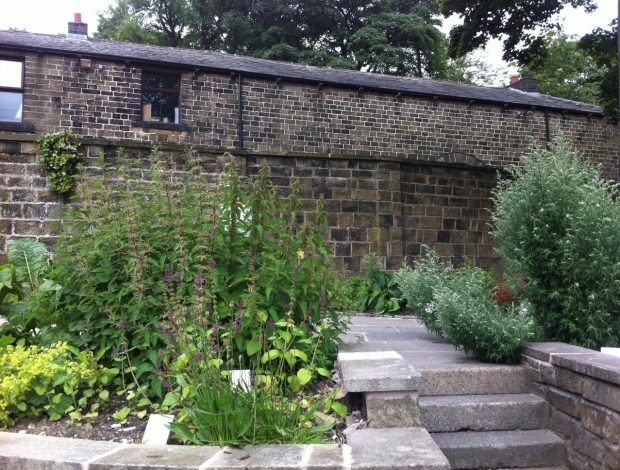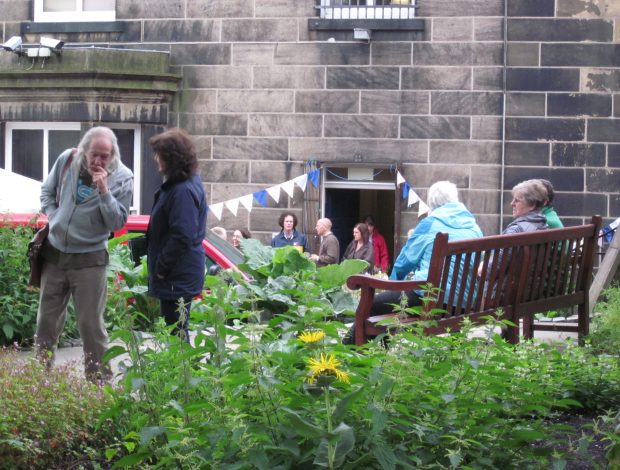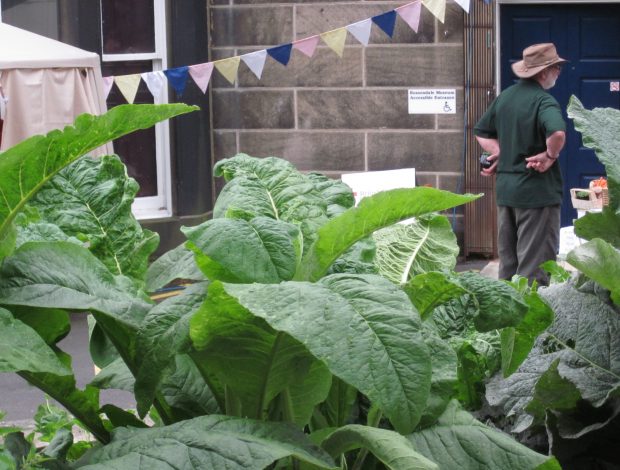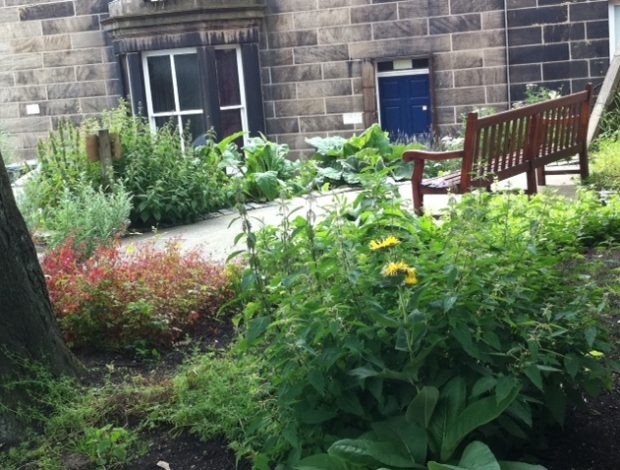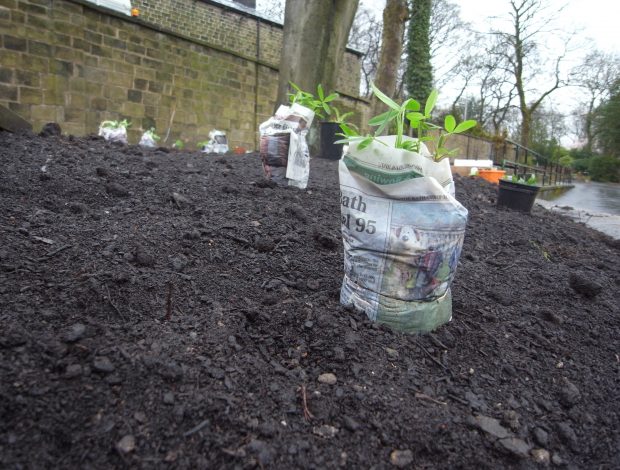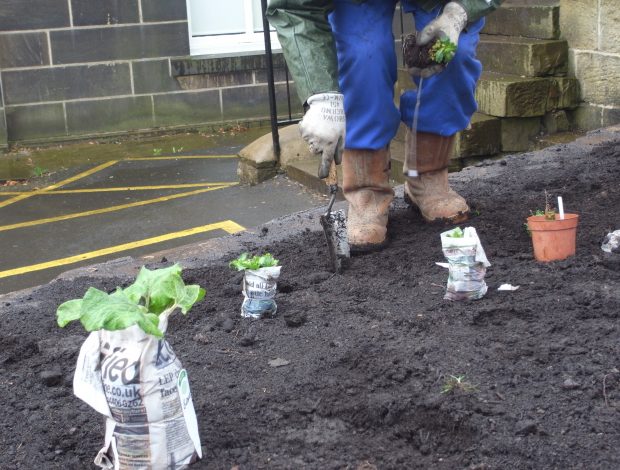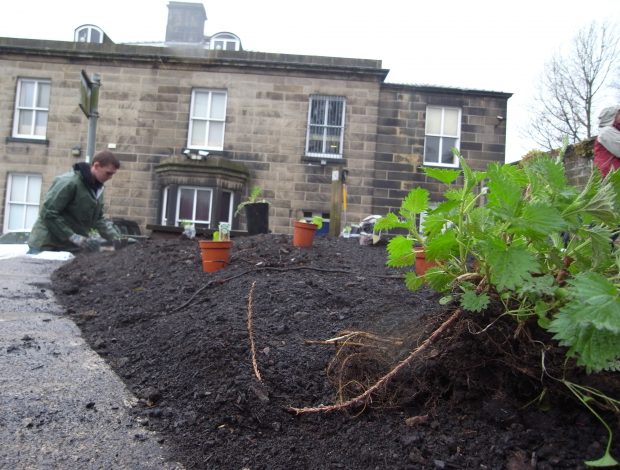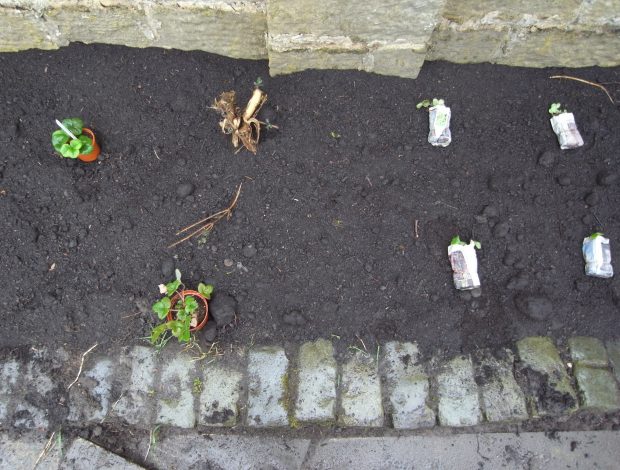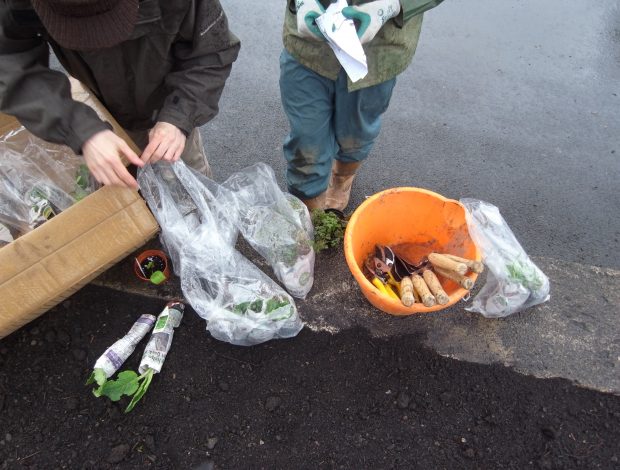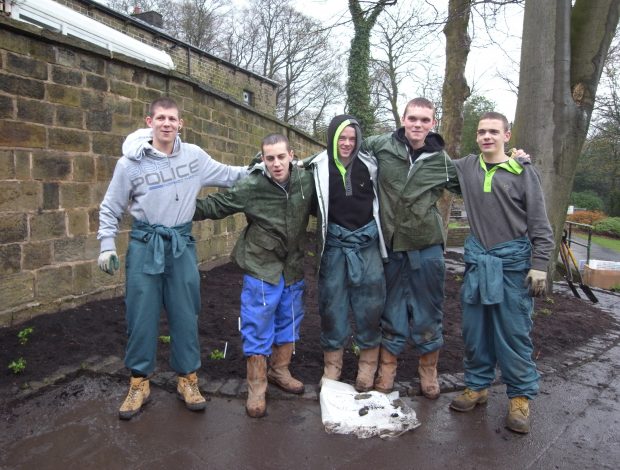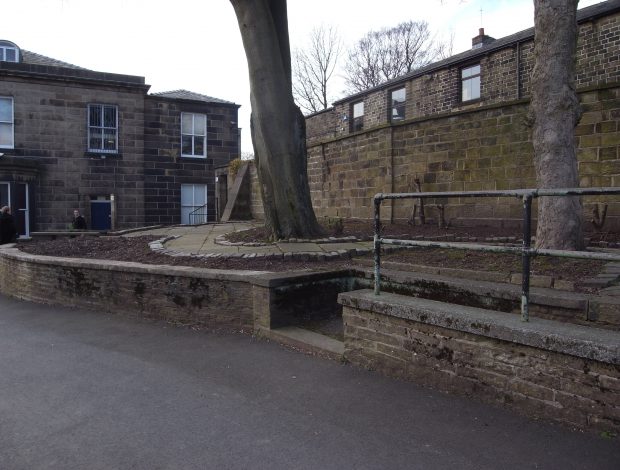Between August 2010 and April 2011 we were invited by Creativity Works and the Rossendale Museum to join the ‘New light on old bones‘ collaborative research team, looking at how the perception and presentation of natural history collections as social history is a legitimate and potentially rewarding curatorial approach. We were asked to explore ways in which this research might lead to new creative strategies for museum interpretation and visitor interaction.
The Rossendale medicinal herb garden
On Wednesday the 29th of March a new medicinal herb garden was planted next to the Rossendale Museum, with the help of a group of students from Alder Grange School, the Whitaker Park gardeners, Incredible Edible, illustrator Friedlinde Nauck, and local herbalists Tim Cappelli and Tracey Humphries.
We concentrated on plants that are easily harvested to make herbal teas, all of which can be found growing in the hills and valleys around Rawtenstall, used as natural remedies to treat a wide variety of complaints. They are referenced in herbal guidebooks that were owned by local botanists and chemists in Victorian Lancashire, currently archived at the Rossendale Museum and the Rawtenstall Town Library.
Herbs included: Agrimony, Alchemilla, Blue Vervain, Burdock, Chickweed, Cleavers, Comfrey, Dandelion, Dead Nettle, Elder, Elecampane, Garlic Mustard, Hawthorn, Herb Robert, Honeysuckle, Meadowsweet, Mugwort, Plantain, Red Clover, Sorrel, St Johns Wort, Sweet Cicely, Valerian, Wild Garlic, Wild Mint, Wild Strawberry, Woundwort, and Yarrow.
A DIY medicinal tea kit, that included instructions on how to pick the herbs and detailed information regarding their medicinal uses, was made available in the museum shop and the museum kiosk, and throughout the summer Tim Cappelli and Tracy Humphries were on hand to offer guided wild-herb walks from the museum.
The Rossendale Museum’s new medicinal herb garden and the DIY visitor packs aim to re-establish the recreational link between Whitaker Park and the museum, encouraging a form of physical interaction between the two spaces, while raising awareness towards the value of indigenous plants that are often regarded as weeds, and the history of botanical practices in Lancashire. Records suggest that Lancashire was a hotbed of amateur botanical activity, with ‘working class’ enthusiasts meeting in pubs to share notes, rare finds, books, and maybe a beer or two. The Bacup Natural History Society is probably a good example of this, and one of the few that is still active in Rossendale today.
One of the things we were interested in, as a way of linking the NLOB research and the natural history collection with the day to day running of the museum, was the idea of souvenirs. In many ways we weren’t able to push this as far as we would have liked, but the DIY tea-kits aim to offer an alternative, unique, and site-responsive souvenir at the Rossendale Museum, of a project that has been planted and maintained by the local community.
The DIY teabag information leaflet (printed on recycled paper, folded and provided with an empty teabag).
